Today, when nothing for me but snow and ice is underfoot, I am thinking about garden paths and how they affect the way we move through our gardens. The material used for the path, its width, whether it is straight or curved, whether we can see where it is leading or not — these aspects and more shape the style of our gardens and influence how we respond to them.
Compare for a moment this grassy path ….
…. with this one.
Both are straight. Both lead directly to a visible destination. Yet their impact is very different.
The reason is easy to see. One path is bordered with stone and neatly edged, the other’s undulating edge meets billowing grass. The first suggests formality and human control over the site, the second conveys a comfortable sense of laissez-faire.
Grass paths are common in gardens around the world — at least, in any location where grass grows well — and for obvious reasons. They are inexpensive to install and easy to maintain. Their consistent green acts as a foil to other colours. They are soft underfoot, although that footing is often wet, particularly in the morning or after a light rainfall.
And they are tough. Grass can stand up to heavy foot traffic, although too many feet walking the same ground can prove a challenge, as this photo from RHS Wisley shows.
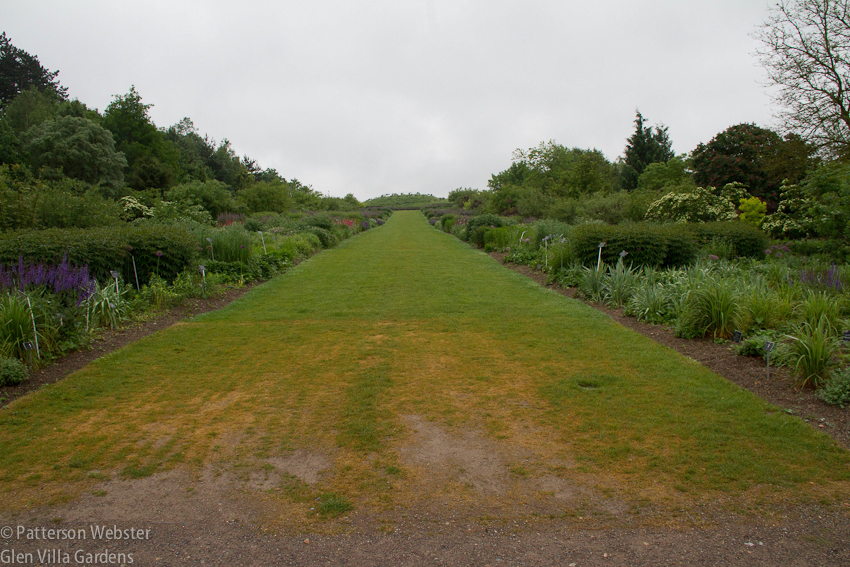
Is too much foot traffic responsible for the sad state of the grass or is it an infestation of some sort? Too much weed killer, perhaps?
Straight paths, whether of grass or any other material, lend a sense of structure and order. The mown paths at this apple orchard at Le Jardin Plume in Normandy form a grid punctuated at intersections by slender apple trees. In autumn, the long grasses are swept to the centre of each square, creating mini haystacks that add bulk and height to a flat expanse.
A similar pattern is used in this orchard in England, but here the trees are at the centre of the squares.
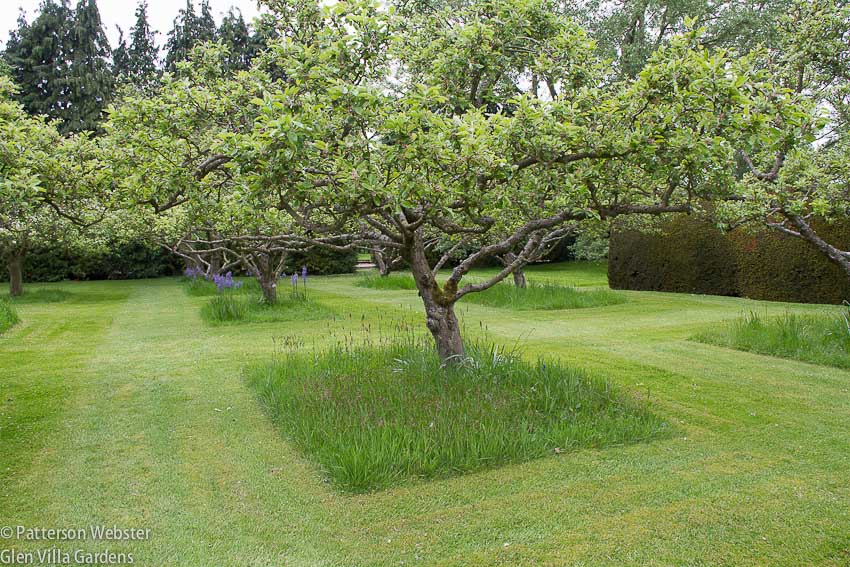
A small section of grass around each tree is left uncut to form a square. Do you think the square is too small? Too big? Just right?
Straight paths are formal while curving paths are informal: right? Well, not always. This path at Chanticleer, a wonderfully inventive garden in Pennsylvania, could meander in any direction; aesthetics alone have determined the way it curves across the open grass. The curves provide a formal structure, creating a path that is as determining as any straight line. Walkers have no choice but to follow the path. And delightfully so: it leads walkers through an open space that might otherwise offer little of interest.
Paths that curve around flower beds may feel more natural and less directive but they control a walker’s path all the same.
As much as the path itself, the setting and surroundings influence how we respond to a garden. Those who prefer more obvious structure may like a garden path that is lined with trees, each set in its own piece of squared-off ground.
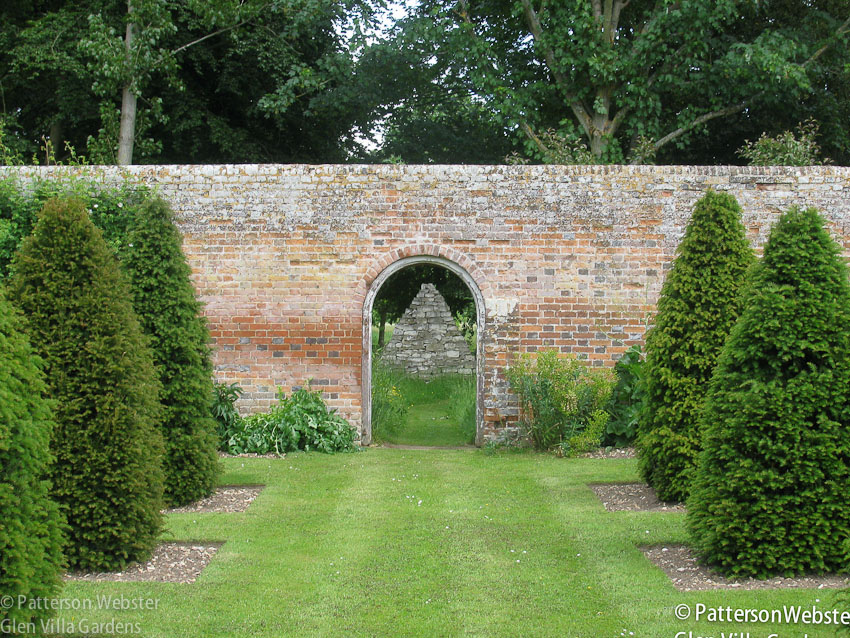
A tree-lined path at The Grove, the garden designed by the late David Hicks, leads through the wall to a stone pyramid..
Those who prefer a looser feeling may respond to a path edged with grass left untended, or mown only occasionally.
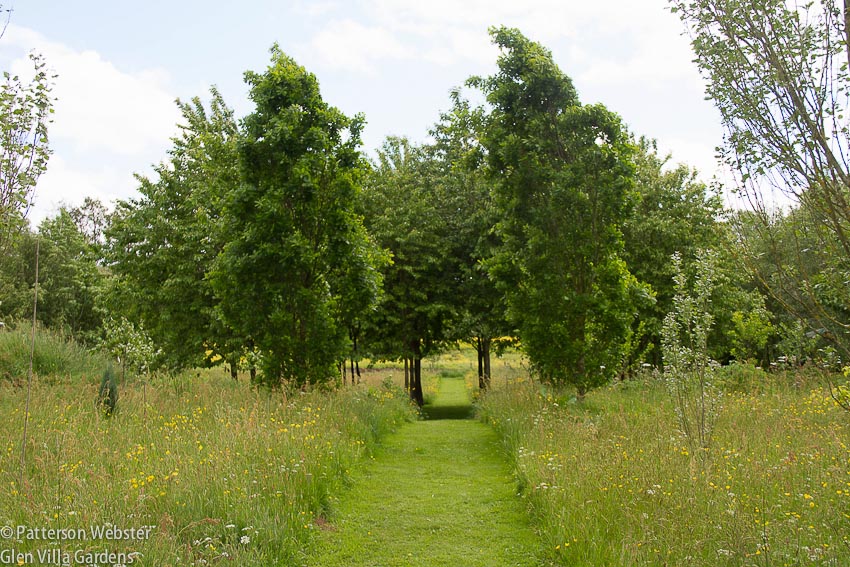
I find this grass-edged path more formal than the one at Sissinghurst, shown near the beginning of this post. Can you explain why I might feel that way?
The width of a path also contributes to the impression it conveys. A narrow path like the one below suggests it is designed for a solitary walker rather than a group out for a convivial stroll.
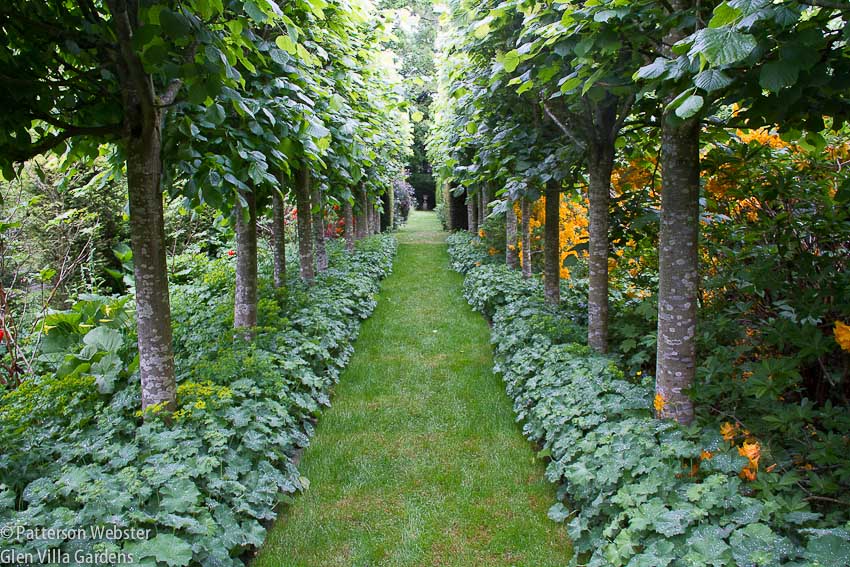
This path is not as narrow as it appears to be: tall trees and the border of lady’s mantle narrow the space visually.
How different is the atmosphere conveyed by the path below. With its decorative stone flambeaux and metal gates, open in permanent invitation, this path seems designed to impress rather than to invite contemplation. The double rank of trees and the elaborate building at the end reinforce this feeling.
This path is open to the glare of the sun. While this could be pleasant on a cool day, a sun-scorched patch of grass is not a sight to behold. Nor is it a comfortable place to be on a hot day.
Most grasses require sunlight to grow well, which explains why covered paths are rarely made of grass. I have come across exceptions, like this laburnum arch in England, where the grass appears to be in excellent condition. High levels of rainfall combined with light use and heavy maintenance may account for this. The blossoming roof creates a tunnel that doesn’t enclose so much as enchant.
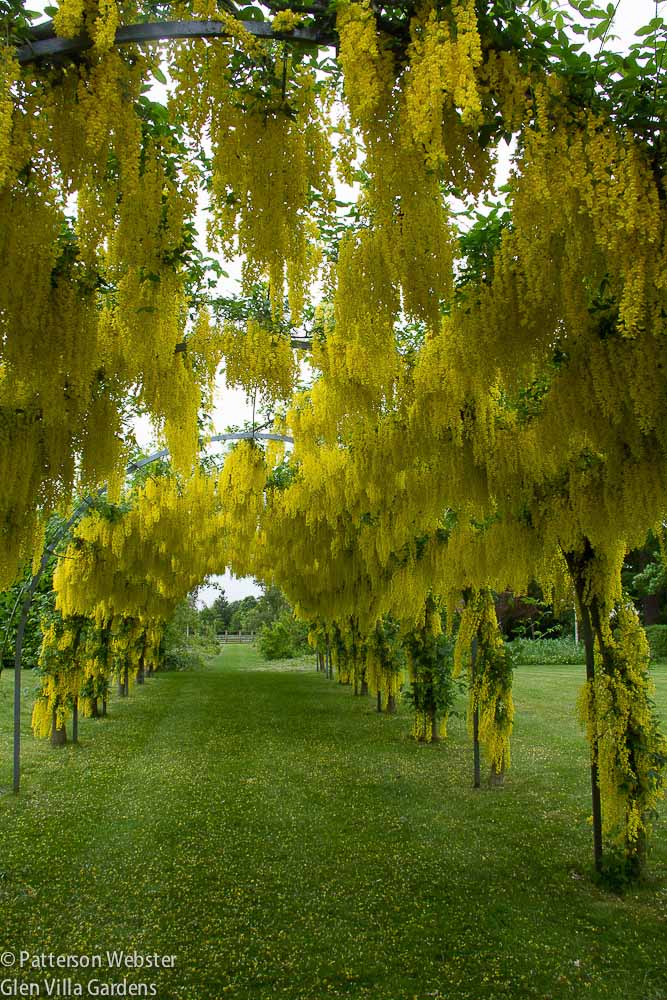
A laburnum arbour leads out towards the countryside at Broughton Grange in England. I’d like to see some special feature at the end of this view. Do you agree?
Flowers and paths go together, whether the flowers are overhead, beside you or under foot. The little daisies growing in the grass below transform an ordinary path into a flowery aisle, the sort you might envision for a romantic wedding where the bride wears rose petals in her hair.

A flowery path at Castello Ruspoli in Italy curves invitingly at the end. That curves makes me want to walk along the path, to see where it leads.
I like straight paths that lead to something interesting: a view, an urn, a bench. I like curving paths where the end is out of sight. I like paths that offer a choice, like this one at Gravetye Manor in England. Shall I go this way or that? I have to decide, and having that choice makes me feel like a participant in the garden experience rather than someone being told what to do.
But perhaps my favourite path is one at Glen Villa, my house in rural Quebec. It’s a simple path, a mown strip that leads through a field of wild Joe Pye weed. In full bloom, with plants towering over my head, I feel submerged in nature’s own garden.
Joe Pye weed likes sunlight and moisture. Without the path I would be submerged — or at least my feet would be. Dry ground, sunshine, flowers all around. What more can anyone ask of a grassy path?

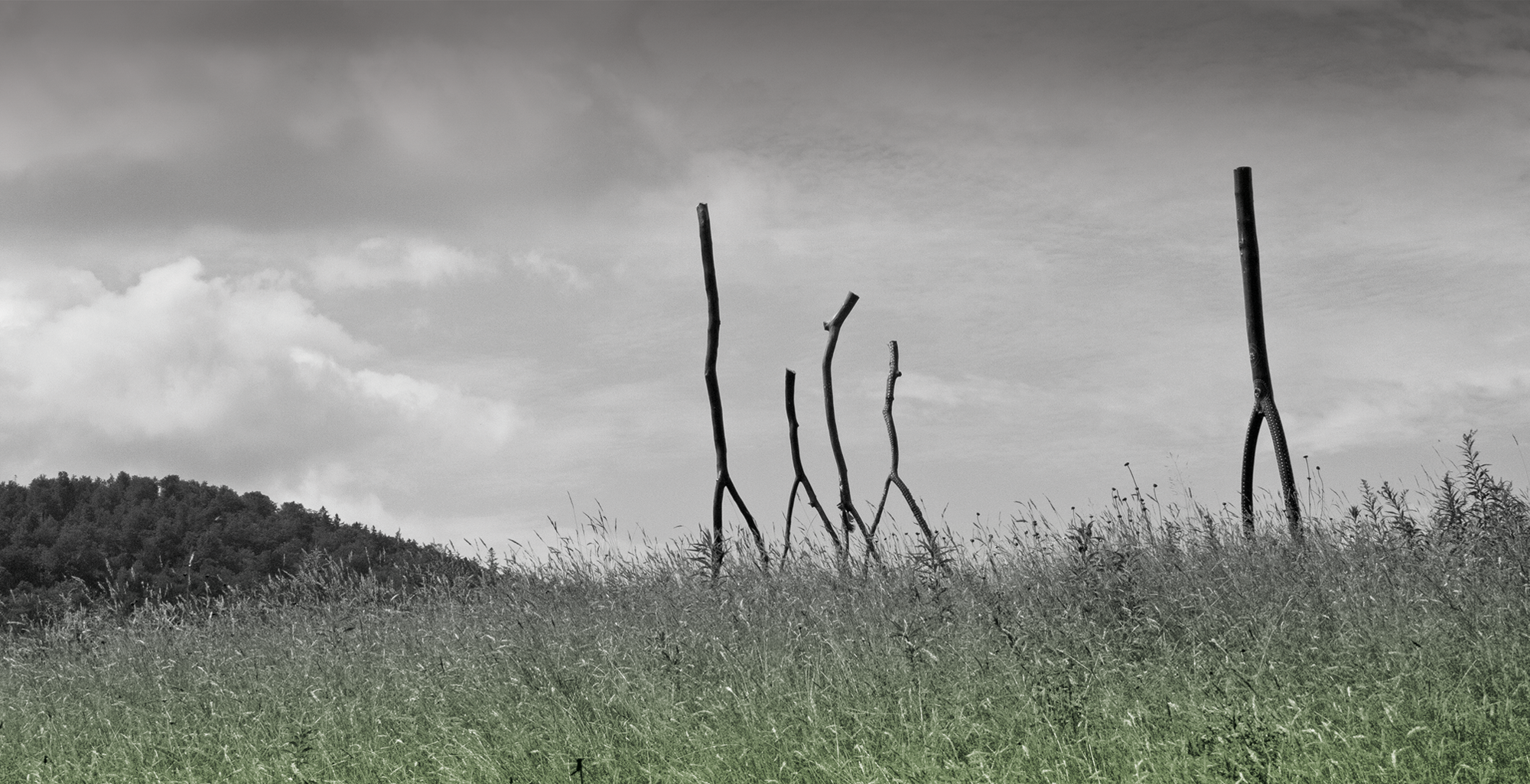
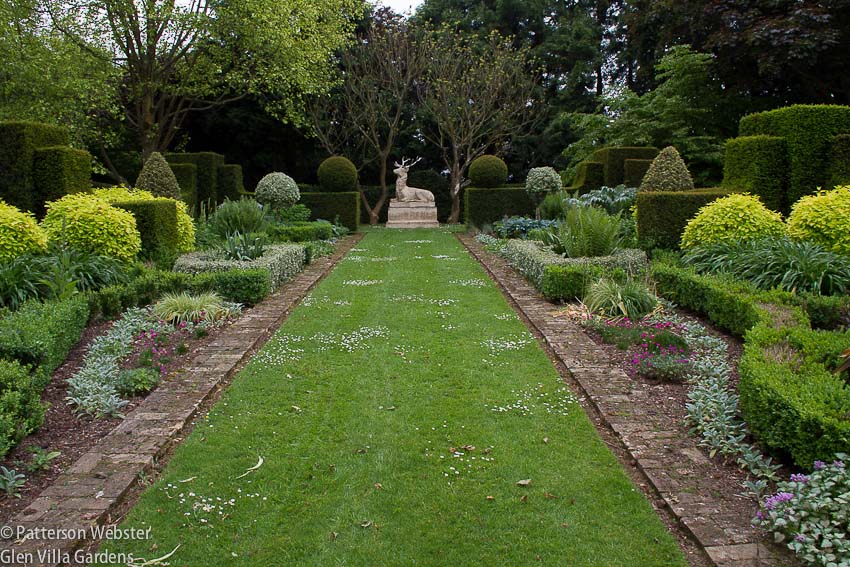
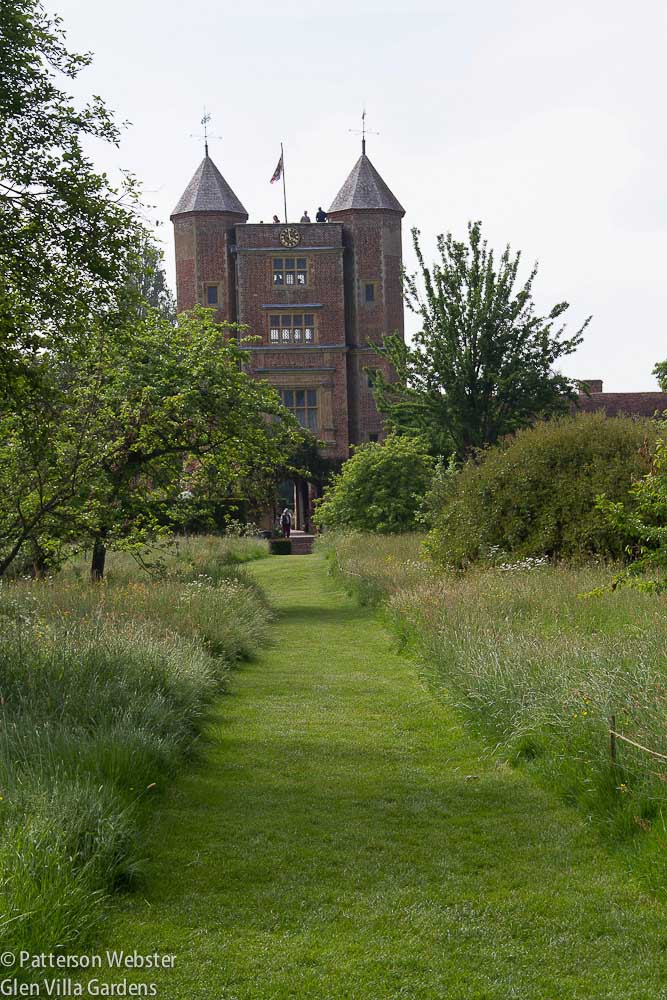
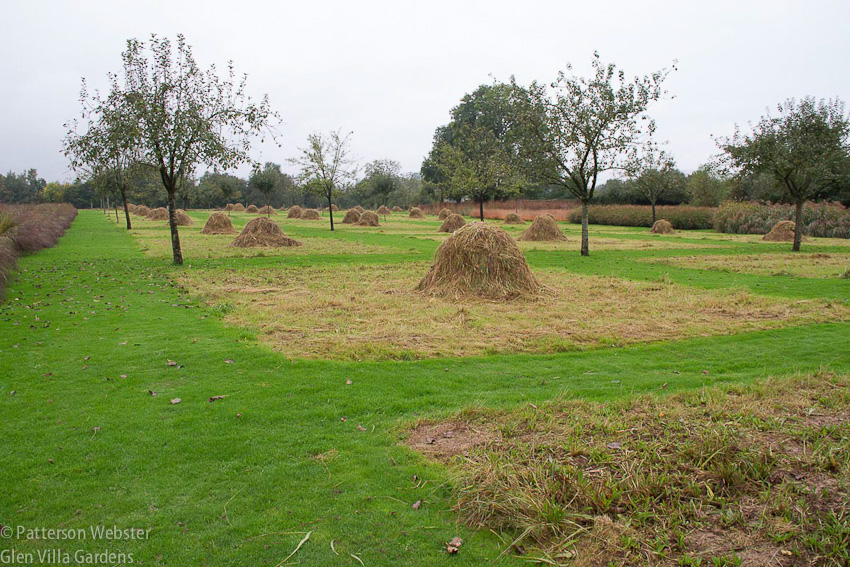
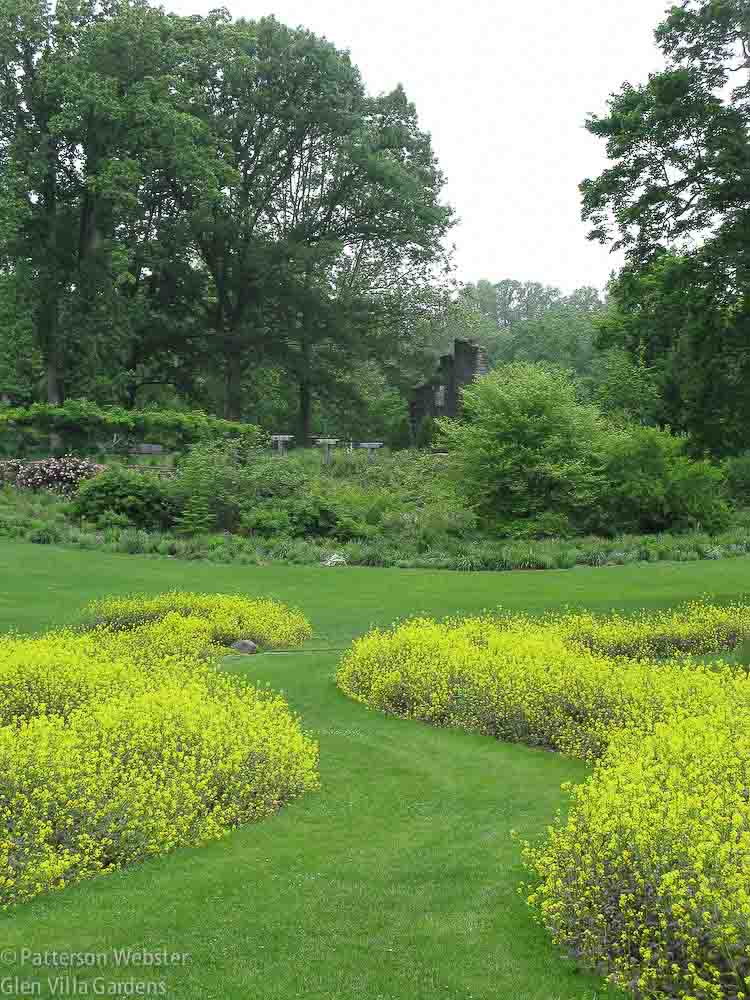
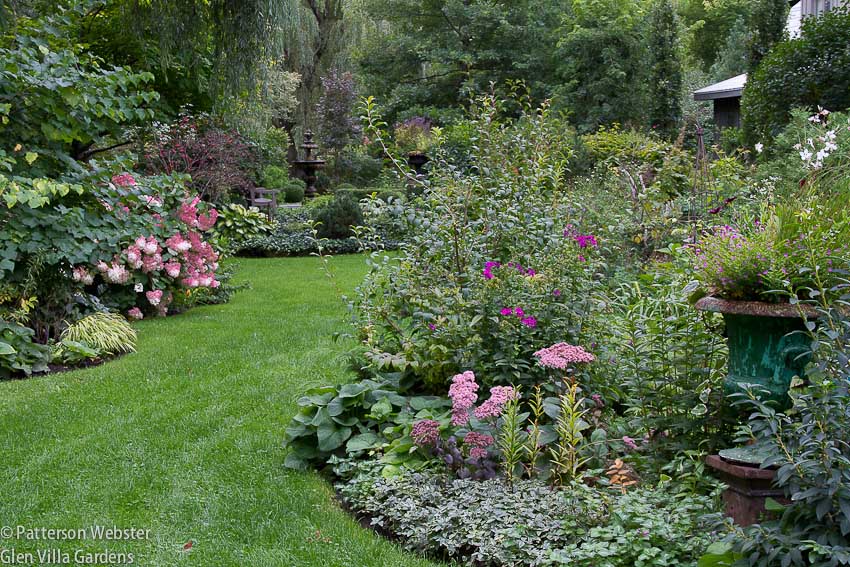
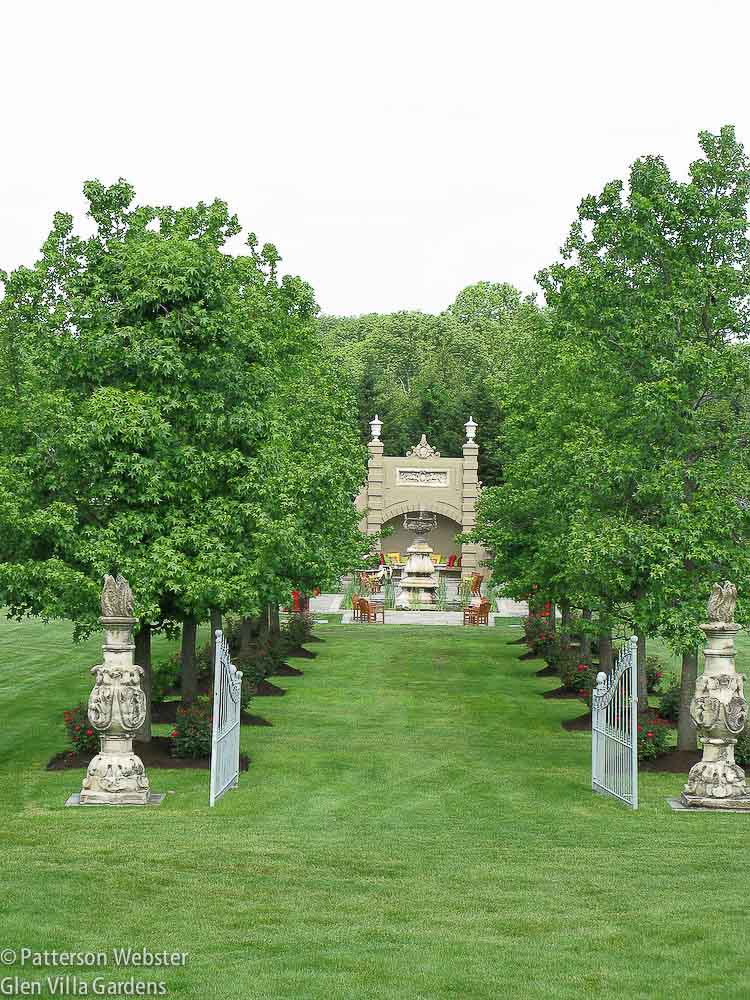






The grass-edged path at Sissinghurst, would appear to be formal perhaps due to being straighter and without a destination in site? I think I do prefer the grassy pathways ways with field like conditions at the edge and just knowing that it provides more homes for nature gives me a greater sense of peacefulness!
Robert, You make a good point about long grass providing homes and food for animals and birds. That gives me a sense of peacefulness, too. Two photos of straight paths running through tall grass actually come from two different English gardens, Sissinghurst and Bryan’s Ground. The second one which is from Bryan’s Ground leads to a structured planting of trees, while the one at Sissinghurst shows another path coming in. These two things make the Sissinghurst photo feel less formal to me. But the difference isn’t great.
You assume in this week’s blog that white is the predominant winter garden color. True only in cold climates with a consistent snow or ice cover. In more temperate zones, the predominant winter color is muddy gray-green-brown slush & exposed dirt – not very attractive or exciting as a backdrop for dormant, leafless shrubs or left-over perennial stalks – any comment? cheers, Nancie
Yes, Nancie, you are quite right. So despite the bone chilling temperatures, I’ll count those of us who live in cold climates lucky that we see white snow rather than muddy slush and exposed dirt!
What a wonderful selection of pathways! I’m with Robert, I love grass paths through meadow-like plantings; probably only surpassed by your own garden, with that feeling of being entirely enveloped by soft foliage and cheery flowers. I had that same feeling at Mount Tomah Botanic Garden (New South Wales) last month. It is really interesting to see the Sissinghurst and Bryan’s Ground photos side by side. They are so similar but so different; the symmetrically placed trees creating an entirely different ambience to the randomly placed, native-looking shrubs at Sissinghurst. I find it fascinating to explore how small changes can have significant impact – it never quells my intrigue.
I like the urn at the junction of the two paths, but I dont like the trellis attached to it. perhaps because it doesnt conform to the traditional patterns of urns and sculptures in gardens. the trellis also unfortunately distracts your eye from admiring the beautiful flowers in the urn.
I agree, Guest. You are the first person to remark on that. What led you to this post I wrote over four years ago?
I am designing and putting in my front and back yards right now so I searched for wooden benches in landscapes and this page came up. I have studied all the pictures and important principles you lay out for my guidance and inspiration. thanks for helping everyone looking at your great website!
Your response makes me feel really good. I’m glad you were able to find help in what I’ve written.